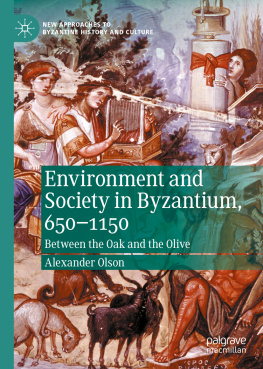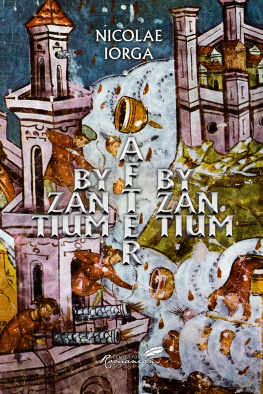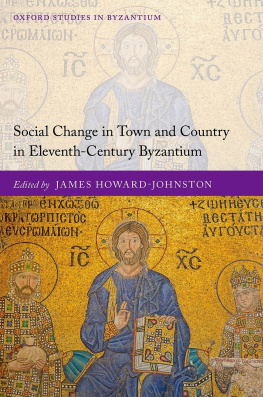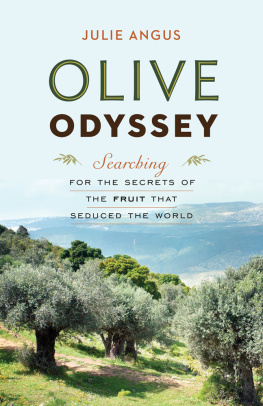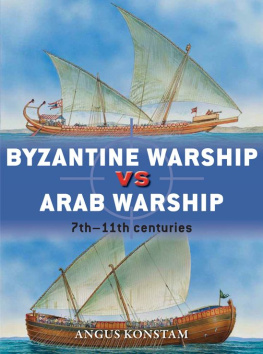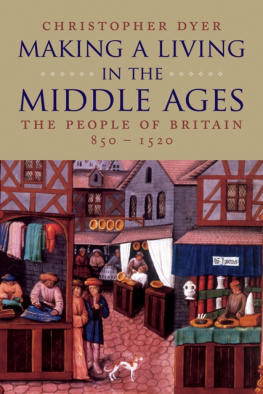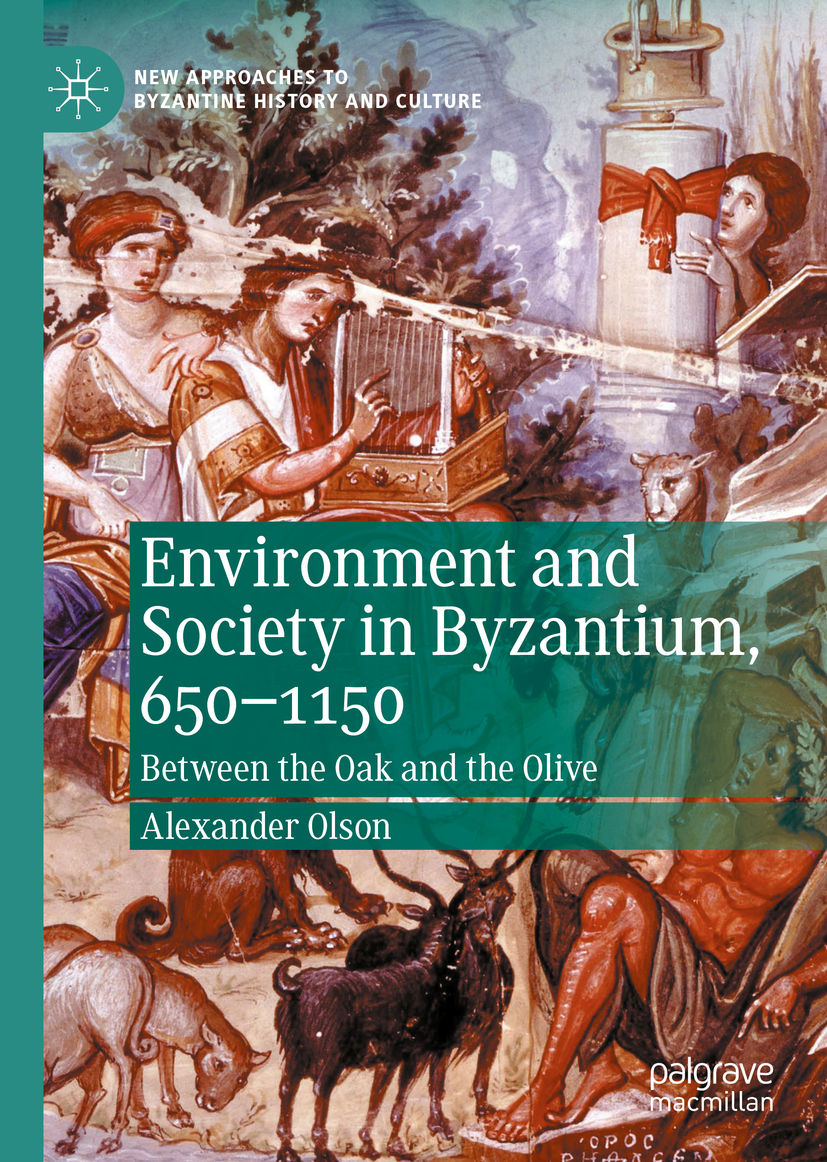New Approaches to Byzantine History and Culture
Series Editors
Florin Curta
University of Florida, FL, USA
Leonora Neville
University of Wisconsin Madison, WI, USA
Shaun Tougher
Cardiff University, Cardiff, UK
New Approaches to Byzantine History and Culture publishes high-quality scholarship on all aspects of Byzantine culture and society from the fourth to the fifteenth centuries, presenting fresh approaches to key aspects of Byzantine civilization and new studies of unexplored topics to a broad academic audience. The series is a venue for both methodologically innovative work and ground-breaking studies on new topics, seeking to engage medievalists beyond the narrow confines of Byzantine studies. publishes high-quality scholarship on all aspects of Byzantine culture and society from the fourth to the fifteenth centuries, presenting fresh approaches to key aspects of Byzantine civilization and new studies of unexplored topics to a broad academic audience. The series is a venue for both methodologically innovative work and ground-breaking studies on new topics, seeking to engage medievalists beyond the narrow confines of Byzantine studies.
The core of the series is original scholarly monographs on various aspects of Byzantine culture or society, with a particular focus on books that foster the interdisciplinarity and methodological sophistication of Byzantine studies. The series editors are interested in works that combine textual and material sources, that make exemplary use of advanced methods for the analysis of those sources, and that bring theoretical practices of other fields, such as gender theory, subaltern studies, religious studies theory, anthropology, etc. to the study of Byzantine culture and society.
More information about this series at http://www.palgrave.com/gp/series/14755
Alexander Olson
Environment and Society in Byzantium, 650-1150
Between the Oak and the Olive
1st ed. 2020
Alexander Olson
Independent scholar, Burnaby, BC, Canada
ISSN 2730-9363 e-ISSN 2730-9371
New Approaches to Byzantine History and Culture
ISBN 978-3-030-59935-5 e-ISBN 978-3-030-59936-2
https://doi.org/10.1007/978-3-030-59936-2
The Editor(s) (if applicable) and The Author(s), under exclusive license to Springer Nature Switzerland AG 2020
This work is subject to copyright. All rights are solely and exclusively licensed by the Publisher, whether the whole or part of the material is concerned, specifically the rights of translation, reprinting, reuse of illustrations, recitation, broadcasting, reproduction on microfilms or in any other physical way, and transmission or information storage and retrieval, electronic adaptation, computer software, or by similar or dissimilar methodology now known or hereafter developed.
The use of general descriptive names, registered names, trademarks, service marks, etc. in this publication does not imply, even in the absence of a specific statement, that such names are exempt from the relevant protective laws and regulations and therefore free for general use.
The publisher, the authors and the editors are safe to assume that the advice and information in this book are believed to be true and accurate at the date of publication. Neither the publisher nor the authors or the editors give a warranty, expressed or implied, with respect to the material contained herein or for any errors or omissions that may have been made. The publisher remains neutral with regard to jurisdictional claims in published maps and institutional affiliations.
Cover illustration: Photo 12 / Alamy Stock Photo
This Palgrave Macmillan imprint is published by the registered company Springer Nature Switzerland AG.
The registered company address is: Gewerbestrasse 11, 6330 Cham, Switzerland
Acknowledgments
The process of writing this text, from early research questions to the final manuscript, was essentially completed on the same laptop between 2013 and 2020. However, the finished book is the culmination of work across various contexts and involved the help of many individuals. Time in libraries, conversations with professors, suggestions from various academics, multiple readings and edits, discussions and presentations at several conferences, and email correspondence with editors and publishers have all allowed me to produce something that would have been beyond my ability by myself. Because of these experiences, I am indebted to numerous people.
Starting the project in Madison, Wisconsin, I was, as a starving graduate student living in an apartment with a wonderful lakeview, fortunate enough to meet and learn from several people. Among them are Jeffrey Beneker, William Aylward, Marc Kleijwegt, Laird Boswell, Bill Cronon, Karl Shoemaker, Elizabeth Hennessy, and the late David Morgan, all of whom provided wonderful opportunities for edification and contributed ideas or suggestions that became part of this book. Rick Keyser kindly read several clunky chapter drafts and generously guided me through the growing field of medieval environmental history. Elizabeth Lapina graciously gave her time and yielded much valuable advice on the manuscript along the way. Tony Pietsch, Neal Davidson, and Derek Taira provided helpful questions and suggestions. Leslie Abadie worked miracles on a regular basis and allowed me to keep the little sanity I have.
Paolo Squatriti magnanimously supported my early and vague questions about medieval environmental history, often with plenty of humor. Professor Ben Graham was unsparing in his sharing of bibliography and ideas concerning pre-modern olive cultivation. John Haldon kindly invited me to a symposium on history and the environment, the experience of which further clarified ideas for this work. I also wish to express my gratitude to those who pointed me in the direction of medieval history back in my undergraduate days at Simon Fraser University: Paul Dutton taught me that we learn much from the little details that pre-modernity has left us; and to my friend Dimitris Krallis who opened the door to Byzantium, and showed me that there was much more to see than I had previously thought (and made microbrews a staple of my life in the process). Aleksandar Jovanovi was a rewarding conversationalist on Byzantine topics back in Canada, and he helped me with some challenging Greek.
I am eternally grateful to Leonora Neville who supervised this project in its dissertation form, and then encouraged me to turn it into a book. She was a superb advisor and I always found myself leaving her office encouraged and enthusiastic about understanding people who lived in the medieval Roman Empire. Since then, her continued recommendations, and help with some tricky sources, have further improved this work. Her confidence and desire to creatively approach Byzantine studies did much to make this book more than a hypothetical project.
I also would like to thank the editorial board and production team for the New Approaches to Byzantine History and Culture series at Palgrave Macmillan. I also wish to thank the three anonymous readers whose comments greatly improved this work, particularly its ideas concerning peasants and olives.
Several institutions have assisted me greatly through this process. The History Department at the University of Wisconsin was an excellent environment in which to pursue this project. The dissertation, from which this book emerged, drew on research supported by the Social Sciences and Humanities Research Council. The Graduate School and the Office of the Vice Chancellor for Research and Graduate Education at the University of Wisconsin-Madison enabled two years worth of writing thanks to an ample supply of funding from the Wisconsin Alumni Research Foundation.

